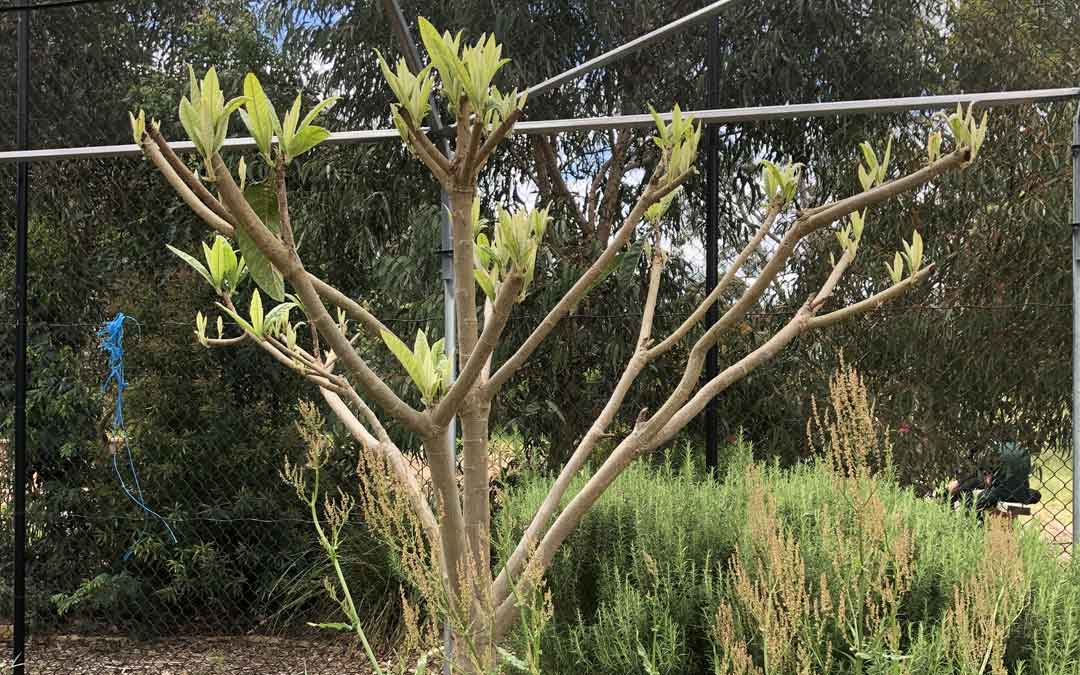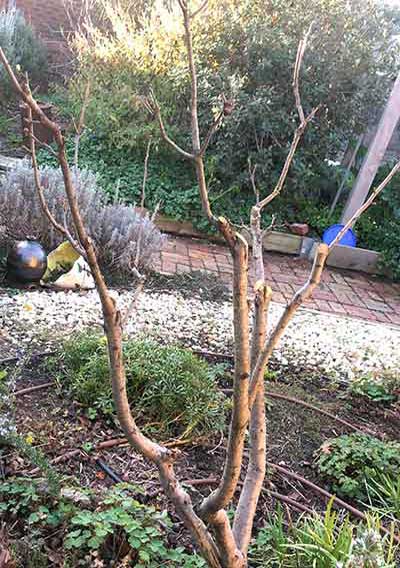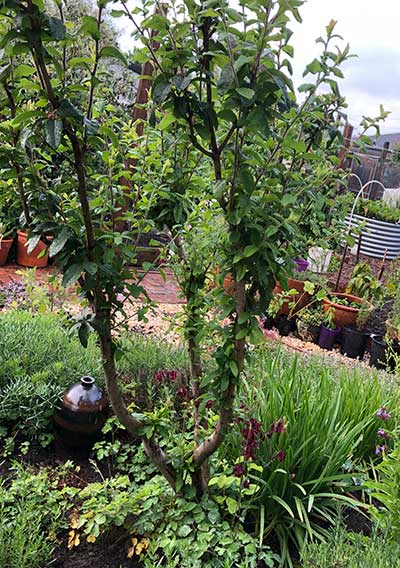Pruning: Thinning vs heading cuts

Heading cuts on a loquat tree
Thinning cuts and heading cuts
When pruning fruit trees there are two types of cuts and they produce vastly different results. There are thinning cuts which are the preferred cuts and heading cuts which are used for only three purposes: to thicken a branch that you wish to keep for the structure, to remove a branch that cannot be retained (eg broken, diseased, growing into an eave, power line etc) or to stimulate spurs on trees that produce their fruit on spurs.
Thinning cuts
Thinning cuts are those that are taken back to the trunk. The cut occurs just before the collar (the swelling) on the trunk. The collar contains healing tissue and protects the trunk from infection. This means the cut is NOT flush with the trunk.
Thinning cuts can be made throughout the year. It is important not to make too many thinning cuts because allowing too much light into the interior of the tree will provoke unwanted rapid vertical growth.
Advantages
- discourages sucker growth
- encourages early fruiting
- encourages air circulation and sunlight into the centre of the tree
- discourages overgrowth
- creates an appropriate structure for young trees
- reduces stub cuts on mature trees

Thinning cuts on a medlar tree

Thinned medlar tree in leaf
Heading cuts
With heading cuts, you are removing the terminal bud (the bud on the end of the branch) and this leads to a branch with many new shoots fanning out from the cut and around it. The lopped branch will have a spiky appearance. Many of these ‘spikes’, especially the ones growing towards the centre of the tree, will need to be removed. If you do need to make a heading cut, cut the trunk and branches back by 1/3 of the previous year’s growth only. Also, cut 6mm above a bud facing in the direction you want the new growth and do not leave a stub as this will develop dieback and slow regrowth. Heading cuts are best made in spring/summer to prevent massive vertical growth.
Advantages
- can change the shape of a tree
- can create bushiness if this is desired but this really applies more to shrubs
Disadvantages
- light heading cuts encourage foliage at the expense of flowers and fruit size
- severe heading cuts produce fewer flowers and fruit but the fruit will be larger
- delay fruiting
- lead to rapid unregulated, vertical growth with fewer fruiting buds
To keep your trees low, it is best to prune in mid spring and then again in mid summer. This prevents rapid vertical growth in winter. Using thinning cuts in conjunction with this regime, will give you lower trees and maximum fruit production.
Written by Robin Gale-Baker
